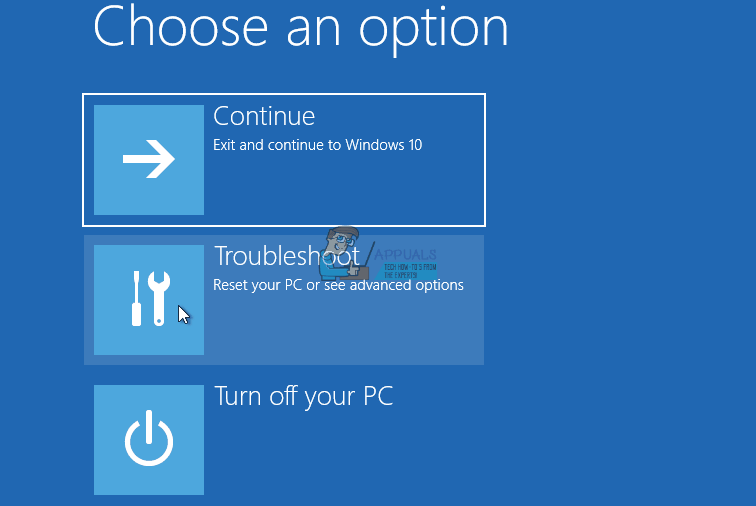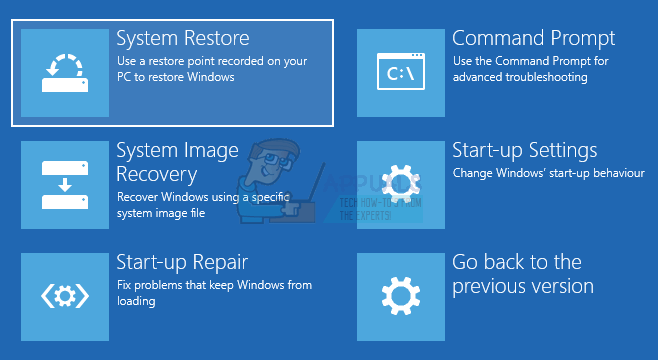Fix: There was a problem resetting your PC on Windows 10
Performing a reset on your windows surely is a good way to solve a lot of windows based problems. But if you are resetting your Windows 10 then there’s a chance that the reset won’t work. This means that either after or during the process of Windows 10 reset, you might see an error message like “There was a problem resetting your PC”. After this error, you might not be able to boot into Windows 10.
The reason behind this issue is that it’s a bug in Windows 10 that Microsoft officials have admitted. They are working on fixing this issue but until then there are a few things that you can do to get around the issue. Since Microsoft knows about the bug, they have given the specific conditions under which you might face this issue.
The conditions are:
- Your PC came with Windows 10 pre-installed, and was not an upgrade from Windows 7 or Windows 8.1.
- The PC manufacturer enabled compression to reduce the disk space required for preinstalled applications.
- You created a USB recovery drive using the “Create a recovery drive” feature in Windows 10.
- You booted the PC to the USB recovery drive and selected, Troubleshoot > Reset this PC > Remove everything.
If all of the above conditions are true then you are highly likely to face this issue and it can be solved with method 1. However, you can also face this issue in other conditions as well. So if method doesn’t work then try other methods.
Note: If you don’t have Windows 10 installation files then go here and download the Windows 10 installation media files and create a bootable USB or burn it on a CD/DVD (instructions available on the link) or you can use Rufus to do this.
If you can see the login screen on your system, then you can also get to Advanced Options by pressing and holding the SHIFT key and choosing Restart.

Method 1: Startup Repair
- Connect your USB recovery drive to the computer
- Restart your computer
- Press any key when it says Press any key to boot from device…
- If it doesn’t say that then you might have to change the boot order from the bios. Do that by following the given steps
- When you restart your computer, press either Esc, F8, F12 or F10 when your manufacturer’s logo appears. You can also check what button to press because it is mentioned on the corner of the screen when the manufacturer’s logo appear. The button changes from manufacturer to manufacturer.
- Once you press the button, select the BIOS setup or BIOS setup utility or Boot options This may vary depending on your manufacturer.
- If you selected the Boot options then you will be shown a few options to choose from. Select boot from USB (or CD/DVD depending on what you are using).
- If you select BIOS Setup then use the arrow keys to move to the Boot section.
- Go into the Boot order and make sure your USB recovery drive is on the top of the order
- Save the changes and then restart your computer
- Note: The options varies from computer to computer. Use your computer manual for accurate instructions
- On the Install Windows page, select Repair your computer
- Click Troubleshoot
- Click Advanced Options
- Click Startup Repair

It might ask you to choose the Windows, select the account, enter password and administrator privileges. Simply follow the on-screen instructions and provide all the necessary information.
Method 2: Recover From Drive
Note: This method might delete all your personal files so follow it only if you are absolutely sure.
- Connect your USB recovery drive to the computer
- Restart your computer
- Press any key when it says Press any key to boot from device…
- On the Install Windows page, select Repair your computer
- Click Troubleshoot
- Click Advanced Options
- Select Recover from drive or System Image Recovery
- Follow the instructions on the screen

Method 3: Using bootrec.exe To Fix Windows Issues
Bootrec.exe is a powerful tool that comes with your copy of Windows. You can use this tool to solve and fix issues related to Windows boot. Although bootrec.exe doesn’t guarantee success in solving your boot problems but it’s certainly worth a try.
- Connect your USB recovery drive to the computer
- Restart your computer
- Press any key when it says Press any key to boot from device…
- On the Install Windows page, select Repair your computer
- Click Troubleshoot
- Click Advanced Options
- Click Command Prompt
- Type the lines given below and press Enter after each line
bootrec /fixmbr
bootrec /fixboot
bootrec /scanos
bootrec /rebuildbcd
You should be able to see messages telling you whether or not the process was successful after each line. Once you are done, restart your computer and check if the booting problems still persists.

Method 4: Using Command Prompt for Reinstalling
This is for people who are having trouble in reinstalling the Windows.
- Connect your USB recovery drive to the computer
- Restart your computer
- Press any key when it says Press any key to boot from device…
- On the Install Windows page, select Repair your computer
- Click Troubleshoot
- Click Advanced Options
- Click Command Prompt
- Type notepad and press Enter
- When the notepad opens, click File then select Open
- Select All Files (*.*) option from the drop down list (in front of the section File Name).
- Find and locate your USB drive letter (like D or F) that you are using to boot into Windows.
- Go into the command prompt type d: and press Enter (replace “d” with your drive letter that you found in the step 6).
- Type Setup and press Enter
This should open your Window installation guide. Now follow the on-screen instructions to install the Windows. You can reinstall it on your previous version or do a clean install.
Method 5: SFC and DISM from Command Prompt
Sometimes the issue might be because of corrupted Windows files or registry files. This type of issue can be solved using the SFC scan and DISM from the command prompt. Even if you can’t access the Windows, you will still be able to use the SFC scan from outside of Windows.
- Connect your USB recovery drive to the computer
- Restart your computer
- Press any key when it says Press any key to boot from device…
- On the Install Windows page, select Repair your computer
- Click Troubleshoot
- Click Advanced Options
- Click Command Prompt
- Type sfc /scannow /offbootdir=d:\ /offwindir=d:\windows and press Enter. Here, “d” in “offbootdir=d:” is the drive where your Windows is installed and “d:\windows” in “offwindir=d:\windows” is the path for your Windows files.
- Replace the drive letter with your Windows drive letter. However, keep in mind that Windows drive letters are not the ones that they appear to be in your “My Computer”. In Windows 10, 8 and 7, if you have your Windows installed on drive “C:” then it will actually be in drive “D:”. So if your Windows was installed on drive “C:” then the above written command should work.
- Wait for the scan to complete and give results.
- Once the scan is done, you will either be shown a message saying that the system didn’t find any errors or it will show a message saying that the problems were fixed
- Repeat the scan at least 3 times to make sure your computer is thoroughly scanned

Once you are done, it’s advised to perform the DISM tool as well regardless of whether or not SFC found/solved the issues. The DISM will repair your Windows using the installation disc provided. To run the DISM, follow the steps given below in the same command prompt
- Type mkdir c:\mount and press Enter
- Type DISM.exe /mount-Image /ImageFile:d:\sources\install.wim /index:1 /mountdir:C:\mount\ /readonly and press Enter
- Now wait for the system to mount your image. You should see the message saying mounting image and it should show the “Operation completed successfully” message at the end
- Now type dism.exe /Online /Cleanup-image /Restorehealth /Source:c:\mount\windows /LimitAccess and press Enter
Once you are done, re-run the SFC scans again just to make sure. Repeat the SFC scans 3 times (the first part of this method) and then restart your computer. This should fix any corruption issues that you might have in your Windows files.
Method 6: Perform a System Restore
Performing a System Restore might also be able to solve your problem. This method won’t work if you don’t have any System Restore points on your computer. If you don’t know whether you have any System Restore points or not then simply follow this procedure. It will let you know if you don’t have any System Restore points.
- Connect your USB recovery drive to the computer
- Restart your computer
- Press any key when it says Press any key to boot from device…
- On the Install Windows page, select Repair your computer
- Click Troubleshoot
- Click Advanced Options
- Now select System Restore
Now follow the on-screen instructions to select the most recent System Restore point that you want to go to.
Method 7: Clean Install
Finally, if nothing else works, it’s time to do a clean install of the Windows either from a USB or DVD. Just simply insert the Windows installation media device and start your PC. Press the key to boot from the installation media (USB or DVD) and format the drive. Now reinstall your windows by following the instructions on the screen.
If you are facing troubles in installing the Windows then check method 3.